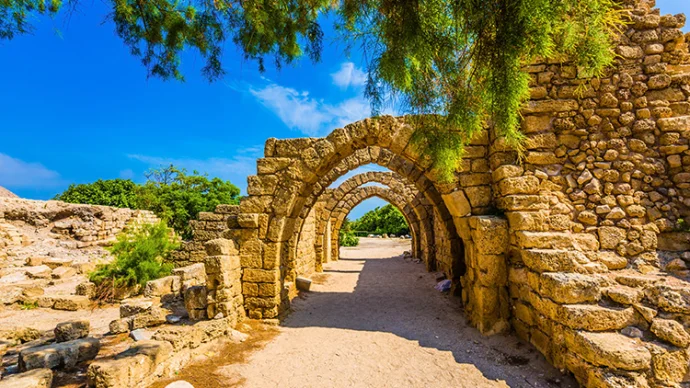
About The Coenaculum
The Coenaculum (also know as the Cenacle) in Jerusalem is a room built by the Crusaders in the fourteenth century, later taken over by the Franciscans and then transformed into a mosque by the Ottomans in the sixteenth century.
History of the Coenaculum
The Coenaculum is best known as being the room where (supposedly) the Last Supper, Christ’s final meal with his 12 apostles before his crucifixion, took place – and as such, is regarded by some Christian denominations as the site of the first church. However, for Christians, it is best known as the “Last Supper Room”, the upper room where Jesus Christ had his final supper before being crucified. The site of the Last Supper has never been definitively verified and the date in which this particular room was built means that it is not the actual room in which this iconic event took place. However, it is believed to be built on the same site where the original room stood.
It’s believed the original building would have been a synagogue. The Crusaders first built a church on the site around 1000AD, enclosing the Cenacle within this new structure. This church was destroyed by the 13th century, and care of the Coenacuum fell into the hands of Syrian Christians for one hundred or so years, before Franciscan Friars took over management.
In the 16th century, Ottoman authorities took possession of the Cenacle and converted it into a mosque – today there’s evidence of the mihrab in the Coenaculum itself, and a minaret and dome atop the roof also provide clues as to this change, juxtaposed against the Gothic architecture
Christians were only allowed to return to the site following the establishment of the state of Israel in 1948, and remains managed by the State today. Not all agree with the Last Supper connotation: another popular belief is that the Coenaculum is on the site where Jesus’ disciples received the Holy Spirit on Pentecost, which allowed them to speak in many languages and therefore spread Christianity widely.
The Coenaculum today
The room is normally buzzing with pilgrims – no matter the specific belief, it’s an important site for Christians. The site is open for private prayer daily: dress respectfully.
Getting to the Coenaculum
The Coenaculum is above King David’s Tomb on Mount Zion, just south of the Old City and outside its walls. Helpfully, there’s a large car park outside the Zion Gate, a 3 minute walk from the tomb. Otherwise, it’s a short walk from the Old City itself: head straight out of the Zion Gate, cross the road and you’ll be there.
Featured In

Roman Ruins Israel
Owing to it once being occupied by the Romans under Pompey the Great, Israel is home to a number of fascinating Roman ruins. Here's our selection of 10 Roman sites in Israel that any ancient history fan should visit.

Israel Historic Sites
An country with a diverse religious, cultural, and political history, Israel is home to a number of striking sites which are essential for any visitor wanting to understand the rich history of the area. Here's our pick of 10 which you shouldn't miss.




















